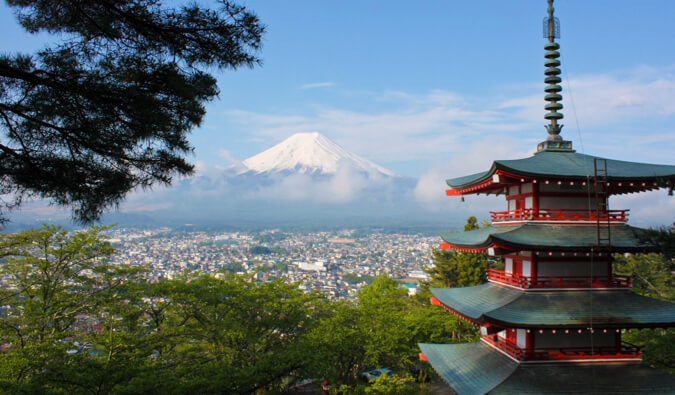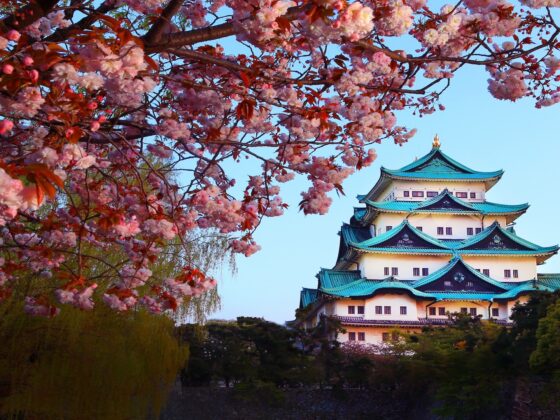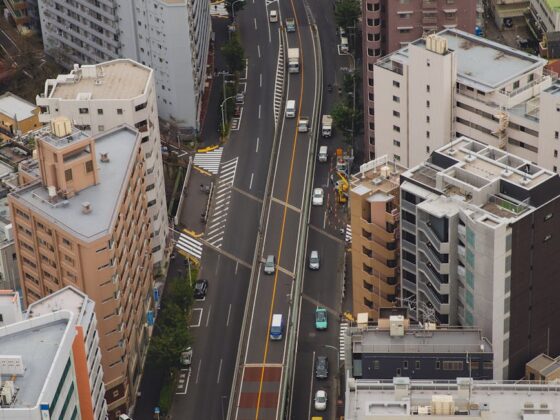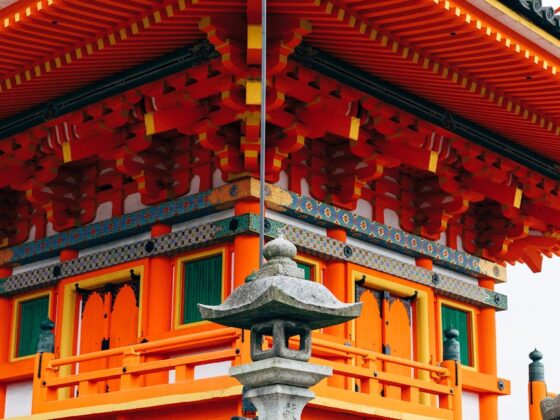Efficient Travel in Japan
Traveling between cities in Japan offers tourists a remarkable opportunity to explore the diverse landscapes and vibrant cultures of the nation. With a highly efficient transportation network, navigating between urban centers has never been easier.
The Convenience of Traveling Between Cities
Japan’s advanced transportation infrastructure allows travelers to move swiftly and comfortably between major cities. The Shinkansen, or bullet train, stands out as the most popular option, boasting speeds of up to 320 km/h (200 mph). This vast network connects major destinations such as Tokyo, Kyoto, and Osaka, significantly reducing travel time. Book your Shinkansen tickets.
| Route | Distance (km) | Travel Time (approx.) | Mode of Transport |
|---|---|---|---|
| Tokyo to Kyoto | 513 | 2h 30m | Shinkansen |
| Tokyo to Osaka | 515 | 2h 30m | Shinkansen |
| Osaka to Hiroshima | 330 | 1h 30m | Shinkansen |
| Kyoto to Nagoya | 140 | 35m | Shinkansen |
Travelers appreciate the on-time performance and comfort provided by high-speed trains. Furthermore, the option to reserve seats in advance makes planning ahead convenient. For more information on booking and seat selection, visit reserve shinkansen seat.
Importance of Efficient Transport Systems
An efficient transport system not only enhances the travel experience but also promotes tourism. Japan’s investment in infrastructure leads to shorter travel times, increased accessibility to various destinations, and a more enjoyable journey. This efficiency supports travelers in maximizing their time, allowing them to enjoy more sightseeing and cultural experiences.
Additionally, with multiple transport options available—such as local trains and buses—travelers can choose the most suitable mode for their itinerary. An understanding of the travel options available can aid in creating a comprehensive travel plan. To explore different transport modes, check our section on shinkansen travel hacks.
By embracing the advanced transportation systems available in Japan, tourists can experience the best of what this incredible country has to offer while ensuring a smooth and enjoyable travel experience.
Modes of Transportation
Traveling between cities in Japan offers a variety of transportation options that cater to different preferences and budgets. The most popular modes include the Shinkansen (bullet trains), local trains and buses, and domestic flights.
Shinkansen (Bullet Trains)
The Shinkansen is renowned for its speed, efficiency, and comfort. It connects major cities across Japan, making it the preferred choice for many travelers. From Tokyo to Kyoto or Osaka, the Shinkansen significantly reduces travel time, allowing tourists to explore multiple destinations in a short period.
| Route | Distance (km) | Travel Time (mins) | Train Types |
|---|---|---|---|
| Tokyo to Kyoto | 458 | 130 | Nozomi, Hikari |
| Tokyo to Osaka | 507 | 150 | Nozomi, Hikari |
| Osaka to Hiroshima | 354 | 90 | Nozomi, Hikari |
Travelers can book Shinkansen tickets online, and it’s advisable to reserve Shinkansen seat during peak travel seasons.
Local Trains and Buses
For shorter distances or accessing rural areas, local trains and buses are widely available. Local trains provide frequent service on various routes, making them an affordable option for sightseeing in suburban areas. Buses complement the train systems, connecting smaller towns to larger cities.
| Local Transportation Type | Features | Cost (approx.) |
|---|---|---|
| Local Trains | Convenient for short trips | ¥200 – ¥800 |
| City Buses | Connects urban and suburban areas | ¥210 – ¥500 |
Travelers can easily navigate the local transport system with the help of apps or information available at train stations. For tips on maintaining ease while moving through train stations, see our article on navigating train stations in japan.
Domestic Flights
Although Japan’s train system is comprehensive, domestic flights are available for longer distances, especially between islands such as Honshu and Hokkaido or Okinawa. These flights are quick but may involve additional time for check-in and security processes at the airport.
| Route | Duration (mins) | Average Cost (¥) |
|---|---|---|
| Tokyo to Sapporo | 90 | 10,000 – 20,000 |
| Tokyo to Naha (Okinawa) | 150 | 15,000 – 25,000 |
| Osaka to Fukuoka | 60 | 8,000 – 15,000 |
For those considering costs, comparing Shinkansen vs flights in Japan can offer insights into the best economical choices when traveling between cities in Japan.
Travelers have multiple options tailored to their journey needs. Whether opting for the high-speed convenience of the Shinkansen, the affordability of local trains and buses, or the quick access provided by domestic flights, effective planning will enhance their overall travel experience.
Using the Shinkansen
The Shinkansen, or bullet train, serves as a vital component of Japan’s extensive transportation network. Understanding how to navigate this system can enhance the travel experience for tourists seeking to travel between cities in Japan.
Overview of the Shinkansen Network
The Shinkansen network is renowned for its speed, efficiency, and punctuality. Covering major cities such as Tokyo, Kyoto, Osaka, and Hiroshima, the network connects travelers across vast distances quickly.
Here are some relevant statistics related to the Shinkansen network:
| Route | Distance (km) | Travel Time (min) |
|---|---|---|
| Tokyo to Kyoto | 513 | 140 |
| Tokyo to Osaka | 552 | 145 |
| Kyoto to Hiroshima | 333 | 85 |
| Osaka to Nagoya | 186 | 50 |
Ticket Purchase and Seat Reservation
Travelers have various options when it comes to purchasing Shinkansen tickets. Tickets can be purchased at ticket counters, vending machines, or online.
The seating options available include:
| Class | Description | Reservation Required |
|---|---|---|
| Standard | Comfortable seating | Recommended |
| Green Class | More spacious and luxurious | Required |
| Gran Class | High-end service with premium amenities | Required |
For advance bookings and popular routes, it is often best to book Shinkansen tickets online.
Travel Tips and Etiquette
Adhering to basic etiquette on the Shinkansen can enhance the travel experience for everyone. Here are some important practices:
- Quiet Environment: Chatting should be kept to a minimum, as the trains serve as a serene space for travelers.
- Eating and Drinking: While it is acceptable to eat and drink on the train, it’s advisable to consume items with minimal odor. Many travelers enjoy purchasing bento boxes from train station kiosks.
- Luggage Space: Be mindful of luggage placement. Larger suitcases should be stored in designated areas at the end of each carriage.
- Boarding and Alighting: Follow the platform markings for smooth boarding and alighting. Board the train quickly to avoid delays.
Exploring the Shinkansen and following these travel tips will enhance the comfort and enjoyment of visitors navigating Japan’s cities. For further insights, consider reading about the differences between the Nozomi, Hikari, and Kodama trains in our article on nozomi hikari kodama differences.
Exploring Beyond the Major Cities
Traveling between cities in Japan offers unique opportunities to explore rural areas and smaller towns, enriching the overall experience. This section highlights accessibility to these regions, sightseeing opportunities along the way, and alternative transportation options for those who venture off the beaten path.

Accessibility to Rural Areas
Japan’s transportation infrastructure makes rural areas quite accessible from major cities. While the shinkansen (bullet train) connects urban centers efficiently, local trains, and buses play a vital role in reaching countryside destinations.
| Major City | Nearest Rural Destination | Travel Time (Approx.) |
|---|---|---|
| Tokyo | Nikko | 2 hours |
| Osaka | Mount Koya | 1.5 hours |
| Hiroshima | Onomichi | 1.5 hours |
| Kyoto | Arashiyama | 30 minutes |
Using local trains and buses can facilitate travel to picturesque areas such as the Japanese Alps, coastal towns, and historical villages. For more details about travel times between cities in Japan, see our article on travel time between cities japan.
Sightseeing Along the Way
The journey itself is often as enriching as the destination. Travelers can enjoy mesmerizing landscapes, scenic views, and local sightseeing opportunities while en route to their next location. Some notable sights include:
- Mount Fuji from the shinkansen between Tokyo and Osaka
- The historical sites in Takamatsu when traveling to Shikoku
- Beautiful rice fields and local festivals along the countryside routes
Several train rides offer views of seasonal attractions, such as cherry blossoms in spring and vibrant autumn foliage. For those interested in seasonal travel, consider reading about cherry blossom shinkansen trips or fall foliage shinkansen destinations.

Alternative Transportation Options in Rural Japan
For a more immersive experience in rural Japan, various alternative transportation options exist. Besides local trains, options include:
- Bicycles: Renting a bike allows travelers to explore at their own pace and discover hidden gems in smaller towns.
- Taxis: While more costly, taxis provide flexibility and can assist in navigating less accessible areas.
- Walking Tours: Many regions offer guided walking tours. This can enhance understanding and appreciation of local cultures and histories.
Travelers interested in unique experiences should consider the hidden gem shinkansen destinations for lesser-known locations that offer rich cultural experiences. Exploring these alternatives can deepen one’s appreciation for Japan while complementing their shinkansen experience.










